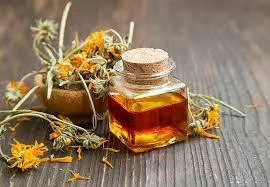FREE SHIPPING ON ALL ORDERS!
your healing starts here
Your Paragraph text goes Lorem ipsum dolor sit amet, consectetur adipisicing elit. Autem dolore, alias, numquam enim ab voluptate id quam harum ducimus cupiditate similique quisquam et deserunt, recusandae. hereYour Paragraph text goes Lorem ipsum dolor sit amet, consectetur adipisicing elit. Autem dolore, alias, numquam enim ab voluptate id quam harum ducimus cupiditate similique quisquam et deserunt, recusandae. hereYour Paragraph text goes Lorem ipsum dolor sit amet, consectetur adipisicing elit. Autem dolore, alias, numquam enim ab voluptate id quam harum ducimus cupiditate similique quisquam et deserunt, recusandae. hereYour Paragraph text goes Lorem ipsum dolor sit amet, consectetur adipisicing elit. Autem dolore, alias, numquam enim ab voluptate id quam harum ducimus cupiditate similique quisquam et deserunt, recusandae. hereYour Paragraph text goes Lorem ipsum dolor sit amet, consectetur adipisicing elit. Autem dolore, alias, numquam enim ab voluptate id quam harum ducimus cupiditate similique quisquam et deserunt, recusandae. hereYour Paragraph text goes Lorem ipsum dolor sit amet, consectetur adipisicing elit. Autem dolore, alias, numquam enim ab voluptate id quam harum ducimus cupiditate similique quisquam et deserunt, recusandae. hereYour Paragraph text goes Lorem ipsum dolor sit amet, consectetur adipisicing elit. Autem dolore, alias, numquam enim ab voluptate id quam harum ducimus cupiditate similique quisquam et deserunt, recusandae. hereYour Paragraph text goes Lorem ipsum dolor sit amet, consectetur adipisicing elit. Autem dolore, alias, numquam enim ab voluptate id quam harum ducimus cupiditate similique quisquam et deserunt, recusandae. hereYour Paragraph text goes Lorem ipsum dolor sit amet, consectetur adipisicing elit. Autem dolore, alias, numquam enim ab voluptate id quam harum ducimus cupiditate similique quisquam et deserunt, recusandae. hereYour Paragraph text goes Lorem ipsum dolor sit amet, consectetur adipisicing elharum ducimus cupiditate similique quisquam et deserunt, recusandae. here
your healing starts here
Articles
Articles

Herbal Energetics & Skin Types: A Botanical Approach to Balance
Herbal Energetics & Skin Types: A Botanical Approach to Balance
When you hear the term herbal energetics, it might sound a bit mystical, but it’s actually a grounded and practical system rooted in ancient healing traditions. Herbal energetics is a way of understanding how herbs interact with the body based on their qualities—like hot, cold, dry, or damp—rather than just what symptoms they target. Think of it as personality typing for plants and people.
Interestingly, these same energetic principles show up in skincare too. If you've ever been told you have "oily," "dry," or "sensitive" skin, you're already familiar with the idea of constitutional types. Just like our skin has tendencies, so do our bodies—and herbs can help bring both into balance.
Let’s explore how herbal energetics relate to skin types and how you can use herbs to support your unique skin constitution naturally.
🌿 Understanding Herbal Energetics
Herbal energetics is a way of describing how an herb acts in the body:
Hot vs. Cold – Does it warm you up or cool you down?
Dry vs. Moist – Does it dry tissues or bring lubrication and moisture?
Tense vs. Relaxed – Does it stimulate or calm?
Each herb has a unique combination of these energetics, and so do people. The goal is to use herbs that help balance your personal constitution, rather than aggravate it.
🧖♀️ Skin Types Through the Lens of Energetics
Your skin can be seen as an expression of your body’s internal balance. Here’s how common skin types align with herbal energetics:
1. Dry Skin = Cold + Dry Energetics
This type lacks moisture and often feels tight, flaky, or dull. There’s often a need for warmth and nourishment.
Supportive Herbs:
Marshmallow root (moistening, cooling): Hydrates tissues deeply.
Licorice root (moistening, gently warming): Soothes and supports adrenal function, which can help nourish dry skin from the inside.
Oatstraw (moistening, slightly warming): A nervous system tonic that also supports skin hydration.
2. Oily Skin = Hot + Damp Energetics
This type is often shiny, prone to acne or inflammation, and feels overheated or congested.
Supportive Herbs:
Burdock root (cooling, drying): Clears heat and supports liver detox, a key player in skin clarity.
Dandelion root (cooling, drying): Helps reduce inflammation and supports elimination pathways.
Calendula (cooling, lymph-moving): Gently detoxifies and soothes inflamed skin.
3. Sensitive Skin = Hot + Dry or Hot + Damp Energetics
Sensitive skin may react to products, temperature, or stress. It’s often inflamed, red, or irritated.
Supportive Herbs:
Chamomile (cooling, relaxing): Calms the nervous system and reduces skin reactivity.
Violet leaf (cooling, moistening): A gentle lymphatic that also hydrates and soothes.
Plantain leaf (cooling, moistening): Heals irritation and helps protect sensitive tissue.
4. Combination Skin = Mixed Energetics
This type has patches of dryness and oiliness, making it a little trickier to balance.
Supportive Herbs:
Nettle (slightly drying, neutral temp): A great tonic herb that helps nourish and balance the whole system.
Rose (cooling, astringent): Helps tone and calm both dry and oily areas.
Lemon balm (cooling, relaxing): Supports nervous system balance and can help harmonize mixed skin types.
🌺 How to Use Herbs for Skin Balance
Herbs can be used internally and externally to support your skin type:
Teas and tinctures help support the skin from the inside out, balancing systemic imbalances.
Hydrosols and facial steams offer topical support based on energetic needs.
Herbal oils and salves can soothe, nourish, or astringe depending on the plant used.
Example: If you have hot, inflamed skin, you might sip on dandelion tea daily and mist your face with rose hydrosol. If your skin is dry and tight, oatstraw infusions and marshmallow root face masks can work wonders.
🌿 Balance Is the Goal, Not Perfection
Herbal energetics teaches us to look at the body—and the skin—with curiosity and care, not frustration. When we shift from treating symptoms to understanding patterns, we get a clearer picture of what our skin is trying to tell us.
So whether your skin is feeling a little dry and cranky this season or oily and reactive, herbs can help you tune in and find your way back to balance.
What Is Upselling?
What Is The Most Profitable Online Business To Start?
How To Make A Sales Pitch Through Email
If I Had To Start Over This Is What I'd Do
Luna Nueva Apothecary | Terms & Conditions | All Rights Reserved 2025

